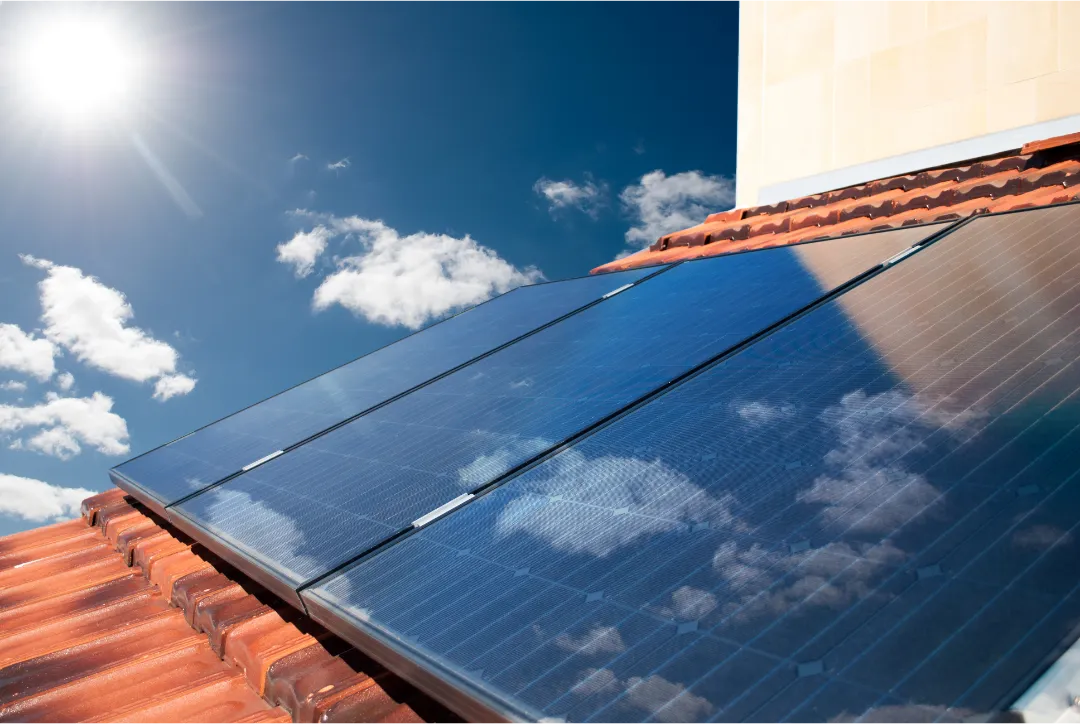PALM HARBOR SOLAR PROS BLOG
Insights from Our Solar Energy Journey

Going Solar: The Ultimate Checklist for a Smooth Transition to Renewable Energy
Coincidentally, my partner and I recently decided to make the switch to solar energy. As we began researching the process, we realized how overwhelming it can be to navigate the world of renewable energy. That's why we've compiled the ultimate checklist for a smooth transition to solar power. From assessing your energy consumption to finding a reputable installer and evaluating financing options, this checklist will guide you through every step of the way. But that's not all - we'll also share tips on obtaining necessary permits and paperwork, as well as how to monitor and maintain your solar system. So if you're considering going solar, keep reading to ensure a hassle-free transition to renewable energy.
Assess Your Energy Consumption
Let's begin by assessing our energy consumption. It is important to be aware of how much energy we are using in order to make informed decisions about saving energy and transitioning to renewable sources. Energy saving tips can help us reduce our consumption and lower our carbon footprint. One effective way to assess our energy usage is through energy audits. These audits provide a comprehensive analysis of our energy consumption patterns and can identify areas where energy is being wasted. By conducting an energy audit, we can pinpoint specific areas for improvement and implement energy-saving measures accordingly. This can include simple actions like turning off lights when not in use, using energy-efficient appliances, and insulating our homes properly. Energy audits also help us understand the potential savings that can be achieved by making energy-efficient upgrades. They provide valuable insights into our energy usage and guide us in making informed decisions about adopting renewable energy sources. So, let's take the first step towards a greener future by assessing our energy consumption and making energy-saving changes.
Determine Your Solar Potential
Now that we have assessed our energy consumption, it is time to determine our solar potential. To do this, we need to conduct a solar potential analysis. This analysis will help us understand how much sunlight our location receives throughout the year and how it can be translated into usable energy.
Solar potential analysis involves evaluating factors such as the orientation and tilt of our roof, the amount of shade from nearby trees or buildings, and the average amount of sunlight in our area. By considering these factors, we can determine the optimal placement and number of solar panels to maximize their efficiency and energy production.
Speaking of efficiency, it is important to understand the concept of solar panel efficiency. This refers to how well a solar panel converts sunlight into electricity. Higher efficiency panels are able to generate more electricity using the same amount of sunlight, which means we can produce more energy and potentially save more on our electricity bills.
Research Solar Incentives and Rebates
We can explore available solar incentives and rebates to maximize our savings and support our transition to renewable energy. By taking advantage of these financial incentives, we can significantly reduce the cost of installing a solar energy system. It is important to note that solar incentive eligibility varies depending on our location and the specific programs offered by different states or utility companies.
To start, we should research the solar incentive eligibility criteria in our area. This information can usually be found on the websites of state energy offices or local utility companies. By understanding the requirements, we can determine if we qualify for any incentives or rebates. Some common eligibility factors include the type of solar installation, system size, and whether the installation is for residential or commercial use.
Additionally, it is essential to look into state-specific solar rebates. Many states offer financial incentives, such as cash rebates or tax credits, to encourage the adoption of solar energy. These programs can significantly offset the upfront costs of installing a solar system. By researching and understanding the available rebates, we can make informed decisions that maximize our savings and help us transition to clean, renewable energy.
Find a Reputable Solar Installer
Hiring a trustworthy solar installer is crucial for a successful transition to renewable energy. When it comes to finding the right installer, there are a few key factors to consider. First and foremost, it's important to choose a solar installer that has experience and a good reputation in the industry. Look for certifications and credentials, as well as customer reviews and testimonials. Additionally, make sure the installer is licensed and insured, as this provides protection for both you and the installer.
Choosing the right solar panels is another important aspect of finding a reputable solar installer. Different panels have different efficiencies and warranties, so it's important to do your research and understand the options available to you. Look for panels that have a good track record in terms of performance and durability.
Comparing installation costs is also crucial in finding a reputable solar installer. While it's important to consider price, it's equally important to consider the quality of the installation. A low-cost installation may not always be the best option if it means sacrificing quality. Get quotes from multiple installers and compare the costs and services offered. Remember, a reputable installer will be transparent and provide you with a detailed breakdown of costs.
Evaluate Financing Options
To ensure a smooth transition to renewable energy, it is essential to carefully evaluate the available financing options. When considering going solar, it's important to compare loan options that can help you fund your renewable energy project. Evaluating financing options allows you to make an informed decision that aligns with your financial goals and circumstances.
When evaluating financing options, start by researching different loan providers and their terms. Compare interest rates, repayment periods, and any additional fees or charges associated with the loan. It's also important to consider the flexibility of the loan terms and whether they align with your long-term financial plans.
Next, assess your own financial situation. Determine how much you can comfortably afford to pay each month towards your solar project. This will help you determine the loan amount and repayment period that works best for you.
In addition to loans, there may be other financing options available, such as solar leases or power purchase agreements (PPAs). These arrangements allow you to access solar energy without the upfront costs of purchasing a solar system. However, it's important to carefully evaluate the terms and conditions of these agreements to ensure they align with your financial goals and provide long-term savings.
Obtain Necessary Permits and Paperwork
Before beginning your renewable energy project, it is important to obtain all necessary permits and complete the required paperwork. This step is crucial to ensure regulatory compliance and avoid any legal or financial complications down the line. To kickstart the process, you will need to submit a permit application to the relevant authorities. This application will typically include information about your project, such as its location, size, and design. Depending on your location and the specific regulations in place, you may also need to provide additional documentation, such as environmental impact assessments or proof of compliance with local building codes.
Obtaining the necessary permits can be a time-consuming process, so it is advisable to start early and allocate ample time for any potential delays. Engaging with local authorities and seeking their guidance can help streamline the process and ensure that you are adhering to all the required regulations. It is also important to stay updated on any changes in the regulatory landscape that may impact your project.
Completing the required paperwork and obtaining the necessary permits may seem like a bureaucratic hassle, but it is a critical step in ensuring a smooth transition to renewable energy. By taking the time to navigate the regulatory framework and comply with all necessary requirements, you can lay a solid foundation for your project's success.
Monitor and Maintain Your Solar System
We regularly monitor and maintain our solar system to ensure its optimal performance and longevity. Solar panel maintenance is crucial to maximize the efficiency and productivity of our renewable energy system. One of the key aspects of maintenance is keeping the solar panels clean. Dust, dirt, leaves, and other debris can accumulate on the panels over time, reducing their ability to generate electricity. Regular cleaning, using a soft brush or a hose, helps to remove these obstructions and maintain the panels' efficiency.
In addition to cleaning, solar system monitoring plays a vital role in ensuring its smooth operation. We utilize advanced monitoring systems that track the performance of our solar panels in real-time. These systems provide valuable insights into the energy production and help us identify any issues or abnormalities. By monitoring the system regularly, we can detect and address any potential problems early on, preventing costly repairs or system failures.
Furthermore, we also conduct periodic inspections to check for any physical damage or wear and tear. This includes examining the mounting structures, electrical connections, and inverters. Any issues that are identified during these inspections are promptly addressed to maintain the system's reliability and longevity.
Conclusion
In conclusion, transitioning to solar energy requires careful planning and research. By assessing our energy consumption, determining our solar potential, researching incentives and finding a reputable installer, we can ensure a smooth transition to renewable energy. Evaluating financing options, obtaining necessary permits, and regularly monitoring and maintaining our solar system are essential for long-term success. With these steps in place, we can embrace a sustainable future and contribute to a cleaner environment.
Connect With Us
Locations We Serve:
© Copyright 2025 Palm Harbor Solar Pros. All Rights Reserved.
Terms & Conditions | Privacy Policy

